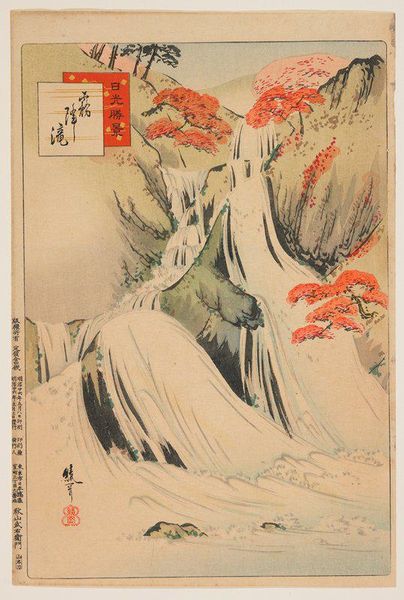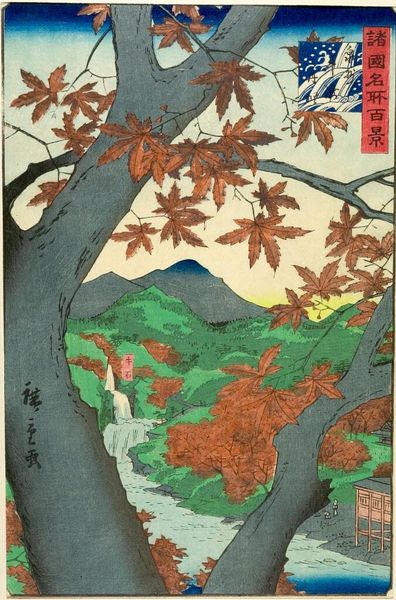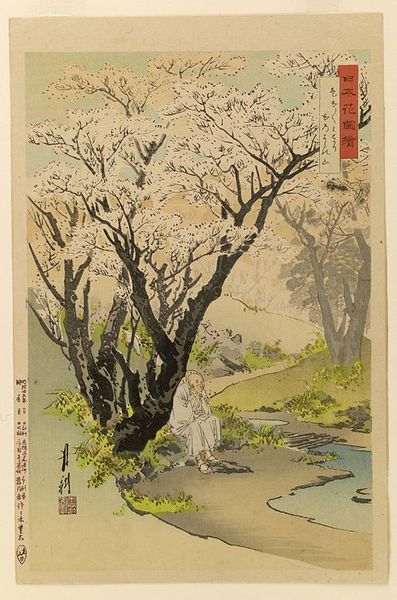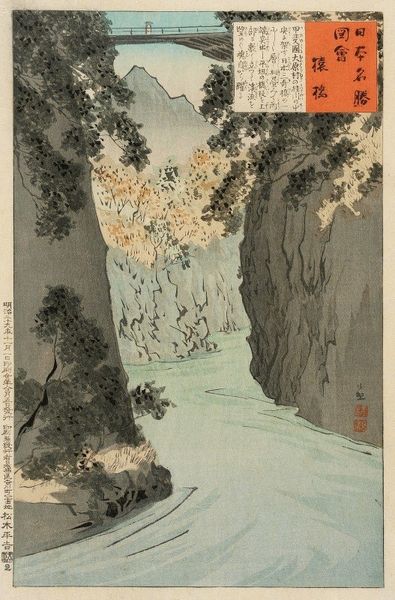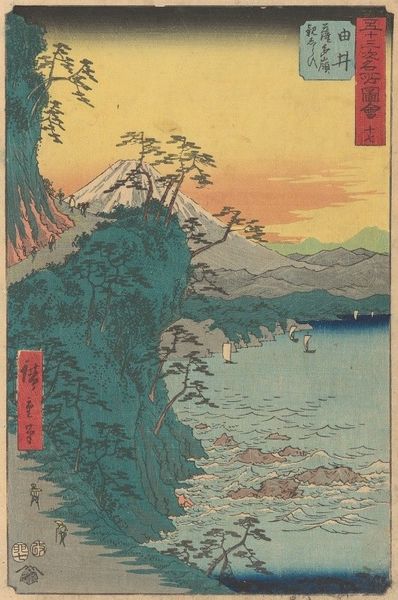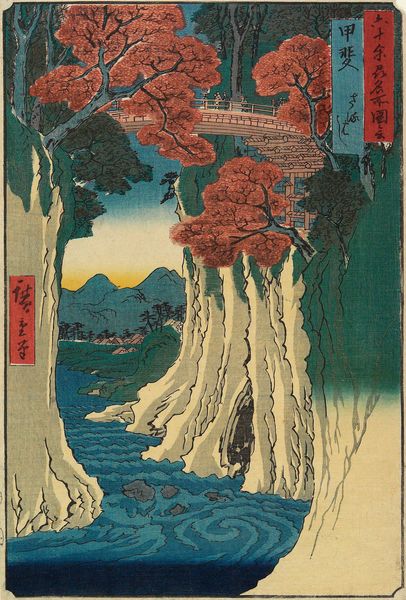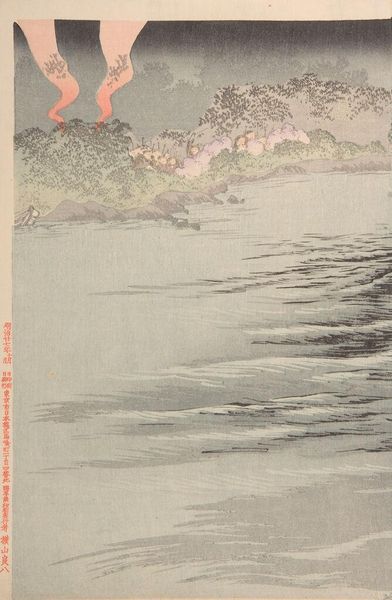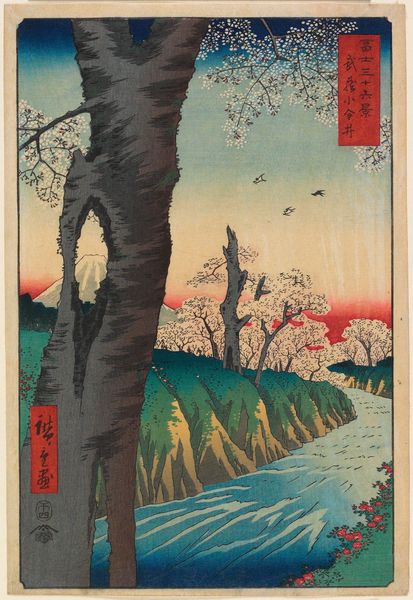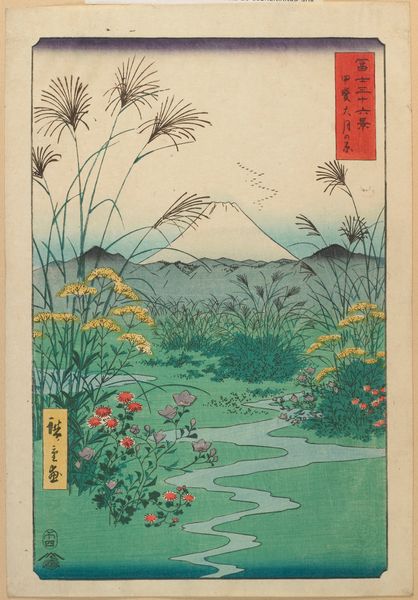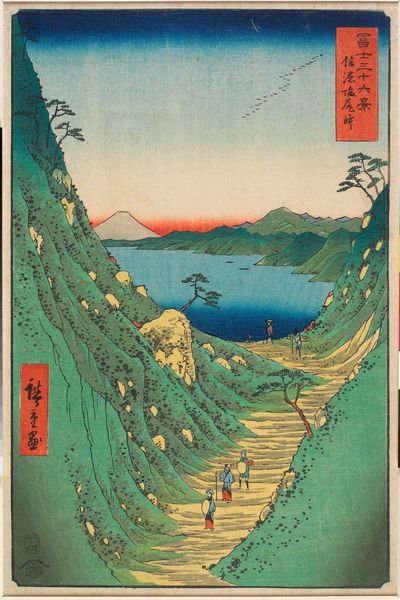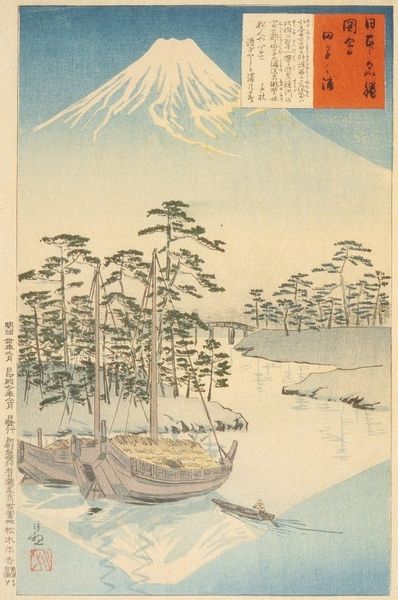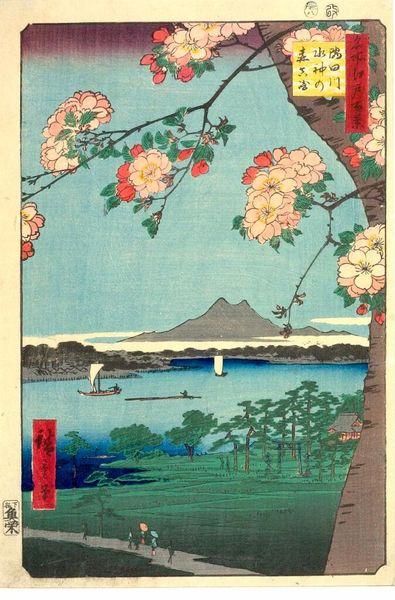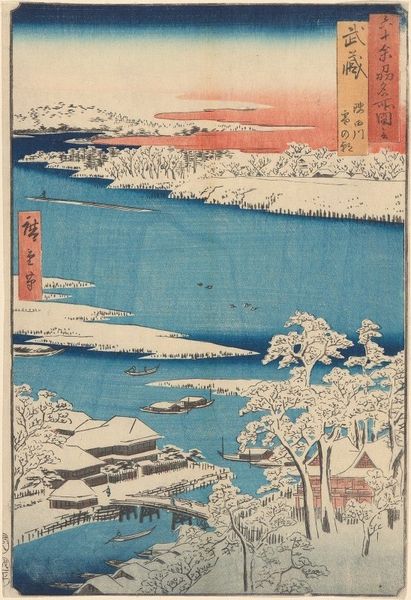
Dimensions: 14 3/8 × 9 1/2 in. (36.51 × 24.13 cm) (image)23 × 19 × 1 1/2 in. (58.42 × 48.26 × 3.81 cm) (outer frame)
Copyright: No Copyright - United States
Curator: Hasui Kawase's "Autumn at Oirase," created in 1933, is a stunning example of his mastery of the woodblock print. The print, housed here at the Minneapolis Institute of Art, captures a serene landscape scene. What strikes you most about it initially? Editor: The water. The artist rendered a remarkable contrast to the trees and earth. There is an underlying calm even though the hues of the foliage speak to seasonal transformation. The work creates an intimate and yet objective observation of nature. Curator: Indeed. Kawase's work demonstrates sophisticated design. Note the contrast between the foreground and background. There is great detail and complexity. Consider also the surface qualities of the trees; their textured application allows for dramatic effect. The lines are clean, suggesting movement and depth while relying on only tonal variety to distinguish objects. Editor: And within that formal sophistication, it's critical to remember that this is also a reflection on our impact on the environment. Kawase, working during a period of intense modernization in Japan, offers a gentle counterpoint, reminding us of the inherent beauty and enduring power of nature. The water flowing suggests continuity; its serenity a resistance to industrial and urban change that began reshaping traditional communities. Curator: Precisely. Ukiyo-e prints are known for depicting the ephemeral, and this work engages in that transient moment. But instead of the beauty of courtesans or actors, Kawase emphasizes the beauty of nature and makes it permanent through art, through line and structure. The leaves may fall, but this print ensures that we remember their color, their form. Editor: This piece exemplifies an ongoing theme relevant even today: that while modernization and industrialization may be important, there needs to be a conscious and compassionate remembering. Kawase captured this moment with more than just color, lines, or textures. Curator: Agreed. Its balanced composition provides a soothing and intellectual experience, encouraging a viewer to appreciate form in unity with nature. Editor: Ultimately, this print not only pleases aesthetically but also encourages thoughtful introspection on culture and ecology, relevant issues during Kawase's time, and crucial to engage with in the present day.
Comments
No comments
Be the first to comment and join the conversation on the ultimate creative platform.
